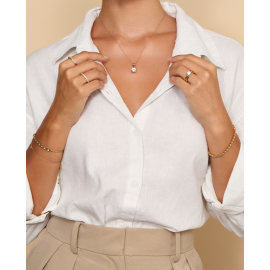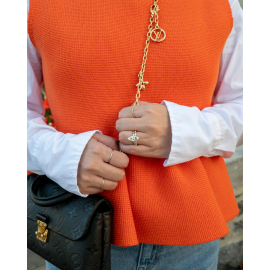Price match guarantee

We’ve teamed up with Klarna to provide flexible payment options, allowing you to shop the way you want. With Klarna, you can split your payment into 3 instalments or choose to pay later, making your shopping experience smoother and more convenient. Your order total must be between £100 and £499 to qualify.

We’ve teamed up with Klarna to provide flexible payment options, allowing you to shop the way you want. With Klarna, you can split your payment into 3 instalments or choose to pay later, making your shopping experience smoother and more convenient. Your order total must be between £100 and £499 to qualify.

September 22, 2023 | by Sarah
It is law within the UK that every item of precious metal sold such as Platinum, Gold, Silver is stamped labelling the item with the type of metal it is. Platinum pieces which weigh less than 0.5 grams, 18ct Gold and Palladium pieces weighing less than 1.0 gram and Silver pieces weighing less than 7.78 grams are except from hallmark.
At Diamonds Factory all our products are hallmarked as per UK hallmarking law from London Assay Office (The GoldSmith Company)
The Goldsmiths' Company Assay Office is the oldest assay office in the United Kingdom. It has provided hallmarking services since The Goldsmiths' Company was founded in the 1300s. The company received its royal charter in 1327 and ranks 5th in order of precedence of the 12 Great Livery Companies of the City of London.
Hallmarking dates back to the 1300s when Edward I of England passed a law requiring any item made of silver, which was offered for sale, to be at least of equal quality as that of the coin of the realm (silver currency). The wardens of The Goldsmiths' Company were tasked with visiting workshops in the City of London to assay (test) silver articles. If these articles were found to be below standard they were originally destroyed and the metal forfeited to the King. If they passed, each article received the King's mark of authentication - the mark of a leopard's head. By 1478, there were several hundred workshops and merchants manufacturing silver articles in the City of London. It was not possible for the wardens to visit them all so the merchants were ordered to bring their items to Goldsmiths' Hall for testing and marking and a permanent Assay Office was established in the building. This is the origin of the term hallmark - struck with the King's mark at Goldsmiths' Hall.
In 1544 the Goldsmith's Company adopted the King's mark as their town mark and the mark of the leopard's head is now internationally recognised as the mark of this assay office.
The Goldsmiths's Company Assay Office is still based at Goldsmiths's Hall and remains the oldest company in Britain to be continually trading from the same site. However, it also has two satellite offices; at Greville Street in Hatton Garden in the heart of the London jewellery quarter and within a high security complex near London's Heathrow airport. It now has a new off-site facility within the Dalston-based jewellery manufacturer, Allied Gold. This is the first time in the Assay Office's 700 year history that it has opened permanent hallmarking services on a customer's premises.
In addition to hallmarking, the office has now expanded its range of services to support the jewellery trade and enforcement authorities. It offers a variety of specialist analytical services including nickel, lead & cadmium testing, antique silver dating, non-destructive compositional analysis, plating thickness measurement and a melt and assay service for scrap precious metal carried out in their fully independent on-site laboratory. Other services offered are a jewellery valuation service, laser marking, trading standards assistance, high quality photography and a comprehensive range of training and educational seminars, lectures and specialist events.






September is here and this month is all about the beautiful blue Sapphire. Known for being a firm favourite amongst the royals and many famous figures around the globe, there’s something incredibly remarkable about the Sapphire that gets everyone talking. With its wide spectrum of bright blue hues, the Sapphire has always been associated with romance, wisdom and royalty and it comes to no surprise as to why the September birthstone grows in popularity year in year out.
4 Prong Setting Gemstone Bangle
From £3,146
4 Prong Setting Gemstone Designer Pendant
From £510
4 Prong Setting Blue Sapphire Halo Pendant
From £434
4 Prong Blue Sapphire Half Eternity Ring
From £703
4 Prong Emerald Shaped Blue Sapphire Engagement Ring
From £480
4 Prong Setting Half Eternity Blue Sapphire Ring
From £174
4 Prong Setting Half Eternity Blue Sapphire Ring
From £558
3 Prong Round Blue Sapphire Stud Earring
From £484
4 Prong Blue Sapphire Solitaire Pendant
From £384
4 Prong Setting Blue Sapphire Half Eternity Ring
From £262
2 Prong Setting Round Blue Sapphire Tennis Bracelet
From £1,822
4 Prong Setting Oval Blue Sapphire Tennis Bracelet
From £5,902
3 Prong Setting Pear Blue Sapphire Halo Earring
From £211
3 Prong Setting Pear Halo Blue Sapphire Pendant
From £166
2 Prong Setting Round Blue Sapphire Drop Earrings
From £1,141
2 Prong Setting Round Blue Sapphire Drop Earrings
From £1,176
4 Prong Setting Round Blue Sapphire Everyday Bracelet
From £567
4 Prong Setting Blue Sapphire Three Stone Ring
From £1,150
What is a Sapphire?
A sapphire is one of the world’s most precious gemstones and is a vibrant blue variation of the mineral corundum. Formed from extremely high pressure and temperatures under the earth’s surface, Sapphires also share the same properties as rubies, the difference being that when the mineral corundum is blue it is considered a sapphire, and when it is red it’s classified as a ruby. Sapphires are incredibly rich in colour and feature amazing shine and texture too, as well as being a part of the four most precious stones, with others being diamonds, rubies and emeralds. Although mainly blue in colour, depending on the other elements found within, sapphires can occasionally be purple and yellow in colouring too.
The History of the Sapphire
The history of the sapphire stretches all the way back to their first mention in the 14th century, however when talking more traditionally about blue sapphires, the first was discovered around 1881. Found high up in the Himalayas in Kashmir, a catastrophic landslide revealed an undiscovered site of vibrant sapphires, and the mine yielded thousands of extraordinary sapphires of every shape, size and quality imaginable from 1882-1887 - which is where the blue sapphires story really took flight. Another important location to note in history for production of the famous September birthstone is Myanmar, where the renowned Burma sapphire has been produced now for over a thousand years. In more recent history, spectacular sapphire gemstones can now be found all over the world, including in locations such as Australia, Sri Lanka, Kenya, Colombia and beyond.
The Royals Love for Sapphires
We’ve all heard of the colour ‘royal blue’ before, and this term is often assigned directly to bright blue sapphires. With many connections to medieval times where kings would wear sapphires often as they were believed to have heavy protective qualities, it comes to no surprise why sapphires sit as a firm favourite with members of the royal family. With one of the most incredible sapphire engagement rings belonging to the Duchess of Cambridge, Kate Middleton – her outstanding sapphire engagement ring is extra special amongst the royal family as it belonged to the Duke of Cambridge’s mother, the late Princess Diana. Another infamous part of history and belonging to the crown jewels that features the sapphire is the Imperial State Crown, which is worn by the reigning monarch after the coronation which features 17 sapphires and the St Edward’s Sapphire right in the centre. Sapphires are repeatedly said to symbolise strength, power and blessings, alongside power and wealth, it doesn’t need any further explanation as to why sapphires sit within the monarchy so prominently.
Sapphire Birthstone Facts
With it being September and all about the sapphire birthstone, we deep dived into a few special facts that add to why the sapphire is such a special stone in today’s day and age.
The name sapphire comes directly from the Greek word ‘sappheiros’ – it’s said that originally this may have referred to a different type of blue stone formerly known as Lapis Lazuli.
Second to diamonds, sapphires are one of two of the hardest gemstones available – both sapphire and ruby sit at 9 on the MoHs
A unique type of sapphire exists called a star sapphire. A star sapphire offers a distinctive reflection where it looks like there is a star trapped within the stone. This reflection is caused by minute inclusions that cause the light to reflect.
The rarest sapphires are found and sifted from flowing rivers in Sri Lanka. These sapphires are actually pink and have their own ‘other’ name called padparadscha.
Once upon a time sapphires came ahead of diamonds as the most popular engagement ring choice up until the 20th century.
Sapphire was used famously on the Apple Watch Series 3; the crystal was used to help improve the screens resistance to scratches.
One of the most legendary sapphires ever sold at auction in 2014 was the Blue Belle of Asia. It features a whopping 392.52-carat cushion cut sapphire inside a diamond necklace, which was mined from Ceylon in the heart of Sri Lanka. Still to this day the buyer remains unnamed.